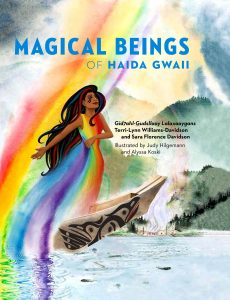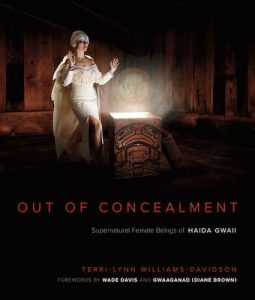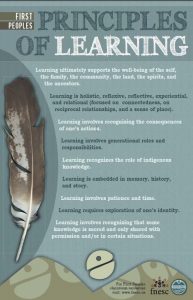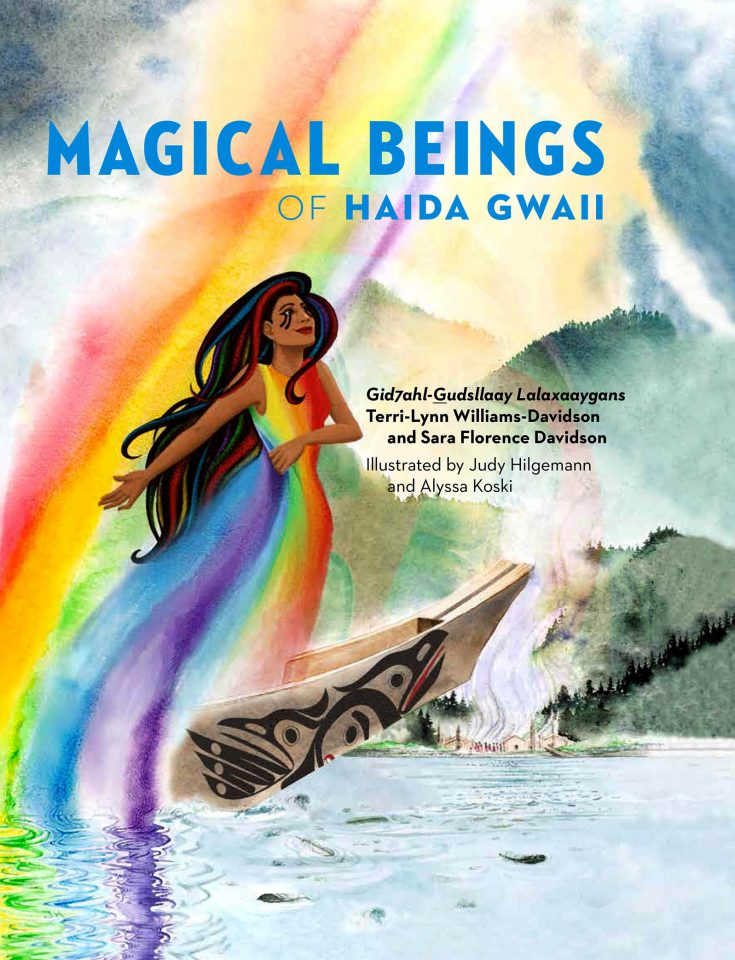Female Haida Supernatural Beings
Grade: 2
Subject Areas: Social studies; English language arts.
Artefact /Place/ Skill: Female Haida Supernatural Beings
Making Space
How might teachers prepare their students to work with this content? What background knowledge might be required?
- Why the Female Supernatural beings are significant to the traditional creation stories of Haida Gwaii, and their Haida Laws.
- Understanding of the connections to the Female Supernatural beings and their significance to the Haida peoples, in the past and present.
- Understanding Indigenous protocols
- Understanding Haida Laws
- Understanding the significance of oral storytelling, creation stories
- Knowing the difference between oral storytelling, folklore, myths, and creation stories
-
- Watching the webinar on the council of Haida nations page
- reading the book Magical beings of Haida Gwaii
- reading the book out of concealment
Practice Humility
How might non-Indigenous teachers sensitively work with this subject? What might they need to consider in their own positionality?
- Protocols
- Values
- Beliefs
- Sacred knowledge
Understanding the Haida Laws, and following protocol when dealing with their traditional stories, and ensuring not to share scared information.
Making proper connections with the Haida community to ensure the ability to work with their sacred stories.
Acknowledge Sources
What can teachers do to find good supporting resources? How should they be cited, especially when it comes to Indigenous knowledges?
Haida Nation resources:
- https://www.haidanation.ca/
- https://www.haidanation.ca/event/sgaana-jaads-kiidas-xaayda-gwaay-sda-isis-female-supernatural-beings-of-haida-gwaii/
- http://haidagwaiimuseum.ca/exhibitions/haida-supernatural-world/
- http://haidagwaiimuseum.ca/exhibitions/ancient-history-of-haida-gwaii/
Teacher resources:
Books:

Williams-Davidson, T., Davidson, S. F., Koski, A., & Hilgemann, J. (2019). Magical beings of Haida Gwaii. Heritage House Publishing.

Williams-Davidson, T., Davis, W., Brown, D., & Xwi7xwa Collection. (2017). Out of concealment: Female supernatural beings of Haida Gwaii. Heritage.
How does it relate to BC Curriculum?
Click on the subject area below to expand the section.
English Language Arts
- Demonstrate awareness of the role that story plays in personal, family, and community identity
- Use personal experience and knowledge to connect to stories and other texts to make meaning
- Show awareness of how story in First Peoples cultures connects people to family and community
- Use sources of information and prior knowledge to make meaning
Social Studies
First People’s Principles of Learning
Which First People’s Principles of Learning apply?

First Peoples Principles of Learning
- Learning involves generational roles and responsibilities.
- Learning recognizes the role of indigenous knowledge.
- Learning is embedded in memory, history, and story.
Inviting Community
What is one way that teachers could work with community members for this project?
- Make a connection with your Indigenous liaison in your school
- Make a connection with an Indigenous liaison of the school district
- Make a connection with the Council of Haida Nation
Indigenous Perspectives
How does your lesson relate to decolonization or reconciliation of education?
Council of Haida Nation
